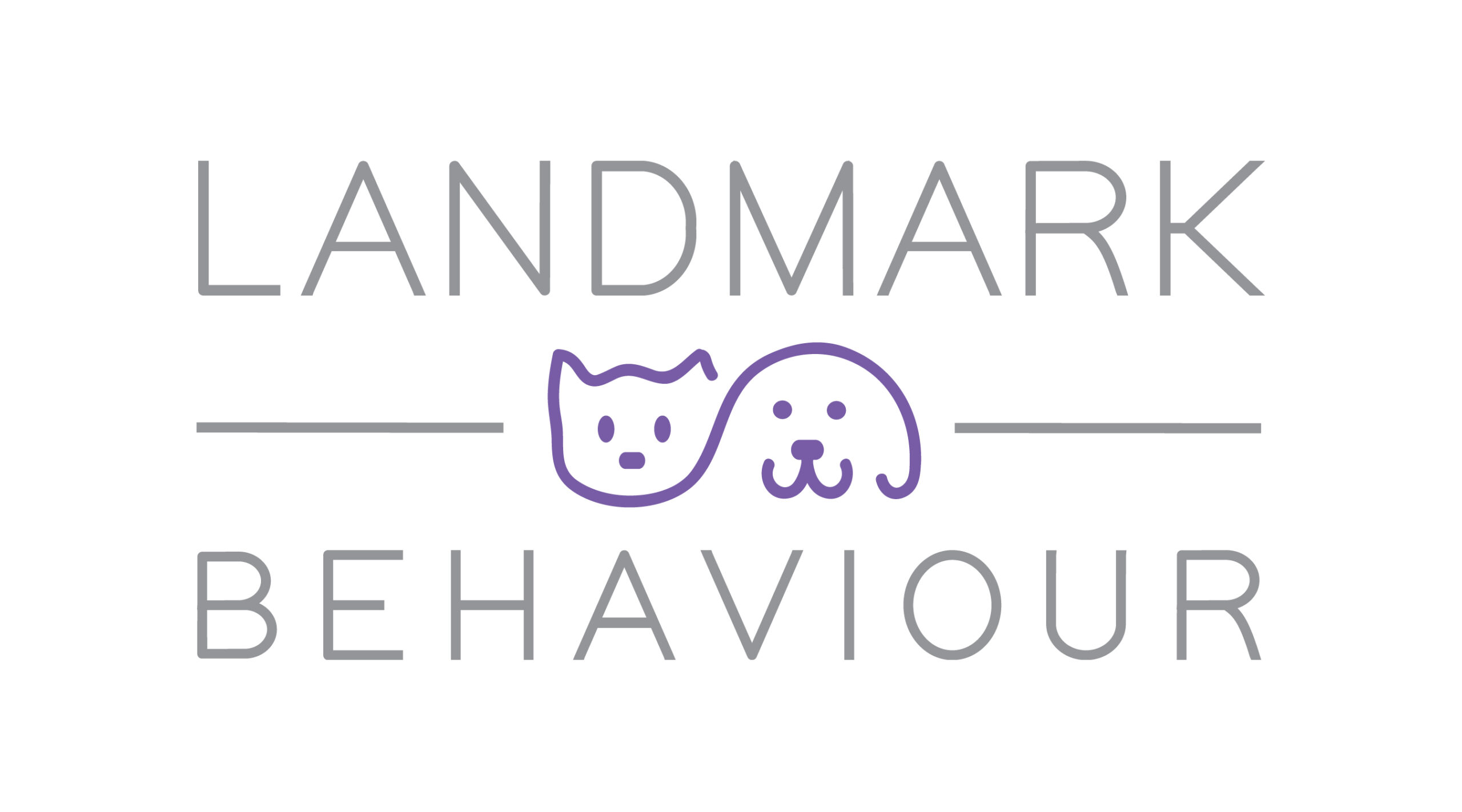Pheromones are often recommended along with behavior modification in both cats and dogs. They're thought to help with anxiety and other behaviours. Some of my clients have found them helpful, while others have not felt they made much of a difference. Let’s dig into the science to find out if they are something you’d want to consider for your pet.
What is a Pheromone?
Pheromones are defined as “chemical cues emitted and detected by animals of the same species that influence social and reproductive behavior” (Frank et al., 2010). They are believed to affect emotional processing.
Pheromones work by reaching receptors in the vomeronasal organ, and sometimes in the skin of the nasal passage. Cats often open their vomeronasal organ with a behavior called flehmen. This is when they open their mouth and curl their upper lip. Dogs will perform tonguing, where they flick their tongue against their incisive papilla, which is a bump on the roof of their mouth right behind their front teeth.
Types of Pheromones Marketed for Dogs and Cats
There are a couple types of pheromones that are used with dogs and cats. These are made synthetically, but are very similar to pheromones that are naturally produced.
The first is an appeasing pheromone, which is secreted from the mother’s mammary region from 3-4 days after birth to right after weaning in both dogs and cats. These pheromones are used as they are thought to provide reassurance to animals even when their mother is not present. Synthetics of the dog and cat appeasing pheromones are often used when there may be anxiety in animals. The dog version was called DAP, or Dog Appeasing Pheromone, and is now called Adaptil. The cat version is Feline Appeasing Pheromone.
Some cat-specific pheromones that are marketed to help with different behavior concerns. Two of these are facial pheromones that cats leave when they rub their faces up against something. These pheromones mark familiar objects and areas and can be rubbed on familiar cats or people. They are also used to mark the boundaries of the areas they live in. Synthetic versions of these are thought to lower anxiety and make areas or other cats feel more familiar. These are marketed as different versions of Feliway.
One of the benefits to pheromones is that they do not travel throughout the body (systemically) and there is no known toxicity associated with them, so they can be used with other medications.
Research on Pheromones
Research with pheromones can be difficult for many reasons. One of these is that they aren’t intended to be a treatment on their own, but used with behaviour modification. This makes research studies much more complicated to design. Many of the studies haven’t had the most rigorous study design, and many have been done by the company that makes the synthetic pheromones.
On the whole, some studies show that they are helpful while others do not. If these are something you’re considering, or may in the future, knowing some of the research can be helpful.
Noise phobias in dogs
One study looked at dog response to the sound of thunder when using Dog Appeasing pheromones. The dogs had collars, half of which released the pheromones and half did not have a pheromone. Dogs receiving the pheromones showed less stress-related behaviors when the thunder was being played. They also spent more time in a hide box than the control group.
Veterinary Settings
There have been several studies of pheromones in veterinary settings. Some studies showed no improvement and others some moderate improvement.
One study looked at pheromone spray on a towel in cats that were waiting at a veterinary clinic in their carrier. Researchers looked at blood pressure and meowing with or without the pheromone. They found there was some improvement in how much noise cats made when they had the a towel sprayed with Feliway on their carrier in the waiting room, but no difference in blood pressure.
Another study in dogs using Dog Appeasing Pheromone diffusers with hospitalized dogs found some benefits to the pheromone compared to a diffuser with no pheromones. Dogs staying 4 days or longer at the clinic were observed, focusing on separation-related behaviour signs in the dogs. Those dogs that had the pheromone diffuser had to urinate and defecate less, showed less licking, and less pacing.
The manufacturers of Feliway state that other strong smells such as disinfectants can affect how well they work, and these are very often used in vet clinics. It’s likely this is also the case for Dog Appeasing Pheromone.
Separation anxiety
A study looked at the use of Dog Appeasing Pheromone with behavior modification and compared it to Clomipramine (a tricyclic antidepressant often used for separation anxiety in dogs) and behavior modification in dogs with separation anxiety. They found similar improvements in both groups after about one month. These were: better sleep, less signs of destruction, less vocalization (barking, whining), urination or defecation in the house, and less self-licking. Participants mentioned in the study that they found the diffuser easier to use than giving their pet a pill. One of the authors of the study is an owner of the company that makes the synthetic pheromone.
Interactions between animals
A more recent study looked at intercat aggression (aggression between cats) in households. As part of the study, participants were given instructions on how to handle aggression between cats (using redirection, positive reinforcement, and classical conditioning), how to score body language and aggression events. They were then were assigned to either a Feliway pheromone diffuser or a diffuser with no pheromone. Over a period of a month, aggression on the whole decreased, very likely due to the training delivered. A certain periods of time, the Feliway group had lower aggression than the control group. This shows a potential benefit for the Feliway along with behavior modification.
Another study looked at the interactions between dogs and cats in homes. Homes were assigned to either Adaptil (Dog Appeasing Pheromone) or Feliway Friends (Cat Appeasing Pheromone). Owners were asked to score both their dogs and cats on a variety of interactions that they observed, including undesirable and desirable behaviors. On the whole, throughout the 6 week study the undesirable interactions decreased and the desirable ones increased. In both groups, they saw a decrease in dogs chasing cats where the cats run away, cats hiding from dogs, cats and dogs staring at one another, and the dog barking at the cat. In the homes with Adaptil they found an increase in friendly greetings between the animals and time spent relaxed in the same room. Dog relaxation scores increased in the Adaptil group, and cat relaxation scores increased in the Feliway Friends groups. There were some concerns with this study as the number of animals in the home was not taken into account, however it does show some promise for dog-cat interactions.
What’s the verdict on pheromones?
Some of the research we currently have on pheromones seems to show some promise, and there are several others that have shown little effect. Knowing this, I thought I’d let you know what I recommend to clients in these situations. With all of my clients, we implement a management plan as well as a behavior modification and training plan. Sometimes, this includes recommendations to speak to their veterinarian about medication, and also homeopathics and pheromones. I always explain that the research is inconclusive at the moment, but they are believed to be very safe and that there is potential they may find it effective in addition to the other work we’re doing. If you’re interested in giving them a try, we don’t have any research showing any harm to that.
If you’re interested in more of the science behind this blog post, visit The Behaviory Blog which is my blog written for pet professionals, and covers the topic in greater depth with scientific references.



